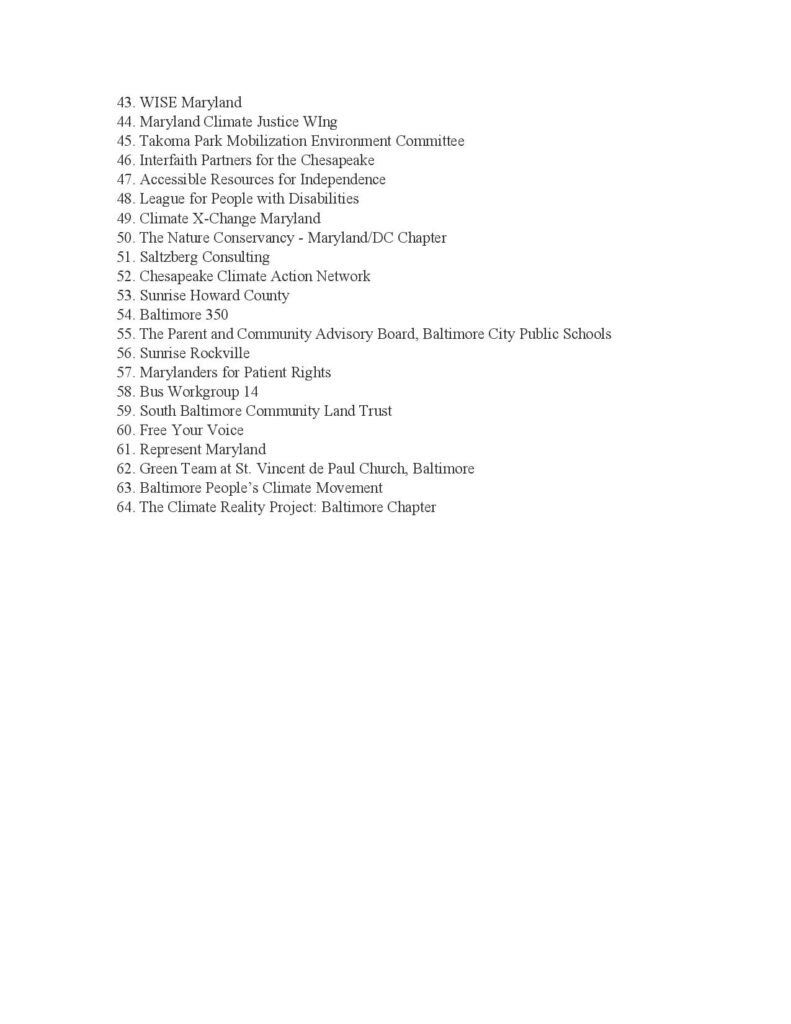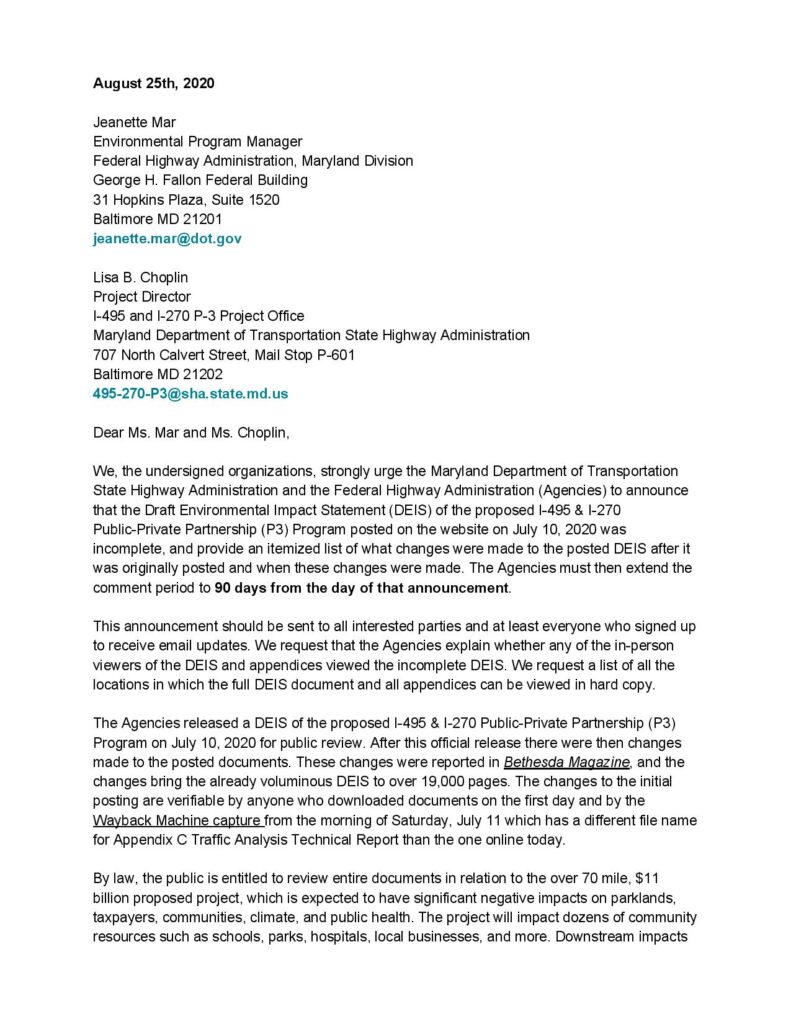
Category: Transportation

Active Transportation Webinar: Complete Streets in Arlington
Click here to watch our Active Transportation Webinar featuring transportation officials and advocates in the Northern Virginia region discussing how they are working to create safe streets for all. The event was cosponsored by Fairfax Alliance for Better Bicycling, the City of Fairfax, Fairfax County, and George Mason University’s Department of Parking and Transportation. Stay tuned for our Active Transportation Summit in Spring 2021!
CSG Testimony Re: Montgomery County Complete Streets Design Guide
July 21, 2020
Montgomery County Planning Board
8787 Georgia Ave
Silver Spring, MD 20910
Item 12 – Complete Streets Design Guide (Support)
Testimony for July 23, 2020
Jane Lyons, Maryland Advocacy Manager
Good evening and thank you to Chair Anderson and Planning Commissioners. My name is Jane Lyons and I’m speaking on behalf of the Coalition for Smarter Growth, the leading organization in the D.C. region advocating for walkable, inclusive, transit-oriented communities. We enthusiastically support the Complete Streets Design Guide.
Thank you and congratulations to the staff who worked on this project – who has yet again solidified Montgomery Planning as a national leader in creative suburban planning. We are pleased that the Complete Streets Design Guide is clear in prioritizing safety, sustainability, and vitality, and provides a roadmap for how to balance competing needs. When we prioritize street space correctly, streets can become an engine for healthy people, a healthy economy, and a healthy environment.
The biggest challenge in actualizing safe, green, vibrant streets is reengineering the county’s arterial roads, especially in lower income neighborhoods where traffic fatalities are more common. The vision in Thrive 2050 is for these arterials to become safe, green, multimodal boulevards, and this document will be a critical guide for those changes.
A few constructive comments:
• Page 55: We’d like it to be clear that a sidepath is always preferable to bikeable shoulders.
• Page 57: We recommend that bikeways be listed as a high priority for downtown boulevards, downtown streets, town center boulevards, and town center streets.
• Page 82: Bus shelters, in addition to BRT stations, should consider opportunities to provide additional passenger amenities such as seating, local area information, wayfinding, and real time traveler information.
• Page 88: We urge the county to update its policy for snow events. Especially in downtowns and town centers, the county – not the building owners – should be responsible for clearing snow on sidewalks, sidewalk ramps, and sidewalk-level bicycle facilities.
• Page 232: Public engagement should also include on-the-street direct outreach strategies, as well as strongly encourage paid community focus/advisory groups to ensure diverse input for major decisions.
• Finally, we ask that the design guide be open to amendment upon the completion of the Pedestrian Master Plan and Vision Zero Action Plan.
Implementing the Complete Streets Design Guide is key to achieving the county’s Vision Zero goal, as well as improving connectivity and helping shift mode-share away from single occupancy vehicles. We look forward to the comprehensive update of the Master Plan of Highways and Transitways that is necessitated by the guide, along with its implementation throughout new projects, resurfacing, construction, and maintenance. Wherever possible, we encourage the Planning Board, MCDOT, DPS, and the Council to codify the guide into law and regulation.
Thank you for your consideration.
Keep transit moving by wearing a mask!

Public transit has been a lifeline for essential workers who keep our society and economy moving. Meanwhile, recent reports indicate that masks work to keep people safe. Reports from countries like Japan and France suggest that public transit is relatively safe, so long as passengers wear masks, don’t talk, maintain distance, and agencies maintain regular cleaning.
Be sure to wear the mask correctly on your face, and avoid touching it whenever possible. Avoid N95 masks with vents, as they do not prevent virus transmission.

All transit agencies in the DC region require masks. For those in Montgomery County, Ride On buses are equipped with limited supplies of disposable masks available to riders without masks, but please do your best to bring your own!
By wearing a mask, you will be protecting your fellow passengers, your transit operators, and yourself! As CDC’s Dr. Robert Redfield recently announced, transmission will decrease sharply if we can all commit to wearing a mask for the foreseeable future.
We know, masks aren’t always comfortable, especially in the hot summer months in the DC area, but masking up is a relatively easy way to make a positive impact in your community and keep transit moving. So wear your mask, travel with hand sanitizer, and please continue to stay safe and healthy. We will get through this together!
Active Transportation Webinar: Active Transportation during COVID-19
Click here to watch our Active Transportation Webinar featuring transportation officials in the Northern Virginia region discussing how they are responding to COVID-19. The event was cosponsored by Fairfax Alliance for Better Bicycling, the City of Fairfax, Fairfax County, and George Mason University’s Department of Parking and Transportation.















